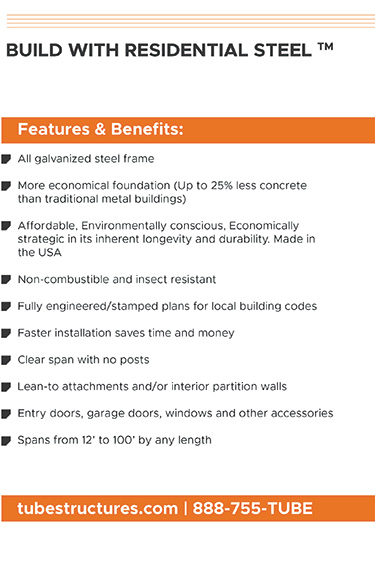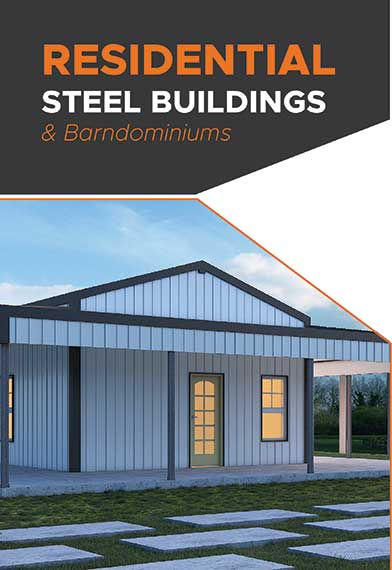September Construction Starts Settle Back 5 Percent
- March 15, 2021
- Posted by: Alan Hageman
- Category: News

New construction starts in September fell 5 percent from the previous month to a seasonally adjusted annual rate of $709.6 billion, according to Dodge Data & Analytics. The September downturn followed 9 percent declines in both July and August, as the pace of construction starts has now pulled back for the third month in a row after reaching the current year’s high in June. By major sector, nonresidential building weakened further in September, sliding 6 percent. Nonbuilding construction dropped 13 percent in September, due to sharp retrenchment for the electric utility/gas plant category while public works held basically steady. Residential building was the one major sector posting a gain in September, rising 2 percent. Through the first nine months of 2018, total construction starts on an unadjusted basis were $599.9 billion, down 1 percent from the same period a year ago. The year-to-date volume for total construction starts was dampened by a 49 percent plunge for the electric utility/gas plant category. If the electric utility/gas plant category is excluded, total construction starts during the first nine months of 2018 would be up 1 percent compared to the same period last year.
September’s data produced a reading of 150 for the Dodge Index (2000=100), after the 157 reported for August. “The pace of construction starts has clearly slowed over the past three months, following what was unsustainably high levels during May and June,” stated Robert A. Murray, chief economist for Dodge Data & Analytics.
“Since construction starts on a monthly basis are often subject to wide swings, it’s useful to look at the recent pattern of activity on a quarterly basis,” Murray continued. “After sliding 7 percent in the fourth quarter of 2017, total construction starts strengthened 3 percent in this year’s first quarter and then advanced another 4 percent in the second quarter. The loss of momentum in July, August, and now September produced a 7 percent decline for the third quarter, in effect returning the pace of construction starts to the level reported at the end of last year. It’s true that the rate of growth for construction starts has decelerated more in 2018, but it’s still too early to say that the construction industry has rounded the peak and is now in decline. There are of course mounting headwinds affecting construction, namely rising interest rates and higher material costs, but for now these have been balanced by stronger economic growth, some easing of bank lending standards, still healthy market fundamentals for commercial real estate, and greater state financing for school construction and enhanced federal funding for public works.”
Nonresidential building in September was $236.4 billion (annual rate), down 6 percent. The commercial building categories as a group fell 13 percent, retreating for the third month in a row after the robust volume back in June that included the start of such projects as the $1.8 billion Spiral office tower in the Hudson Yards district of New York NY and a $665 million office tower on North Wacker Drive in Chicago. Office construction in September dropped 38% from August that included groundbreaking for a $520 million California state government office building in Sacramento, Calif. By contrast, the top three office projects that reached groundbreaking in September were smaller in scale—a $90 million office building in Allentown, Pa., an $82 million office building renovation in Woodlawn, Md., and the $75 million office portion of a $200 million mixed-use complex in Coral Gables, Fl. Stores and warehouses also weakened in September, with each registering a 4 percent decline. Hotel construction in September was unchanged from the previous month, helped by the $114 million hotel portion of the $180 million Great Wolf Resort and Water Park in the Stockton, Calif., area. The commercial garage category was the one commercial project type to report a September gain, rising 40 percent after a lackluster August. Manufacturing plant construction also showed improvement from a lackluster August, climbing 36 percent with the lift coming from the start of a $800 million aluminum rolling mill in Ashland, Ky., and a $190 million research and design facility expansion in Fitchburg, Wis.
The institutional side of the nonresidential building sector dropped 6 percent in September, a less severe decline than what was reported for commercial building. Educational facilities, the largest institutional building category, retreated 13 percent even with the September start of a $110 million engineering building at the University of Tennessee in Knoxville, Tenn. Large high school and middle school projects that reached groundbreaking in September were located in Euclid, Ohio ($85 million), Rockville, Md. ($69 million), and Springfield PA ($68 million). Healthcare facilities fell 26 percent in September, following the 28 percent gain that was reported in August, and the public buildings category (detention facilities and courthouses) plunged 37 percent. The most noteworthy area of strength in September was the transportation terminal category, surging 153 percent, as the $700 million concourse expansion project at Denver International Airport was entered as a construction start. (The $650 million main terminal upgrade at Denver International Airport was entered as construction start in July.) Also advancing in September was the amusement-related category, up 11 percent with the boost coming from the $220 million Lexington Convention Center expansion in Lexington KY and the $89 million addition to the Milwaukee Symphony Center in Milwaukee. Church construction starts were able to show improvement in September, increasing 17 percent after very weak activity in August.
Nonbuilding construction in September was $156.5 billion (annual rate), down 13 percent. The decline was due mostly to the electric utility/gas plant category plummeting 76 percent following its 43 percent jump in August. The largest power-related projects entered as September starts were considerably smaller in scale than in previous months, and included a $146 million power transmission line in the Las Vegas area, an $89 million solar power farm in Springfield, S.C., and a $50 million solar power installation in Ludlow, Vt. The public works categories as a group increased a slight 1 percent in September from the previous month. On the plus side, the miscellaneous public works category rose 12 percent, and included the start of the $1.4 billion Arbuckle II pipeline (that will transport natural gas liquids from Oklahoma to Texas) and the $1.1 billion Cactus II pipeline system (that will transport crude oil from the Permian basin to the Corpus Christi, Texas, area). Water supply construction in September advanced 15 percent, helped by the start of the $159 million Catskill Aqueduct repair and rehabilitation project in Catskill, N.Y. On the down side, highway and bridge construction starts slipped 2 percent in September, easing back for the second month in a row after a 4 percent retreat in August. Despite the September dip, highway and bridge construction in September did include the start of the $1.2 billion I-70 East widening project in Denver. Through the first nine months of 2018, highway and bridge construction starts were up 7 percent at the national level, with the top five states ranked by the dollar amount of highway and bridge construction starts as follows—Texas, California, Florida, New York, and Pennsylvania. States ranked 6 through 10 were—Illinois, Ohio, North Carolina, Colorado, and Virginia. Both the river/harbor development and sewer construction categories showed reduced activity in September, decreasing 12 percent and 17 percent respectively.
Residential building in September was $316.6 billion (annual rate), up 2 percent. Single-family housing rose 2 percent, rebounding slightly from a 5 percent drop in August which had followed what was essentially an extended plateau from late 2017 through July. By geography, September showed this pattern for single-family housing relative to August—the Northeast, up 13 percent; the West and South Atlantic, each up 3 percent; the South Central, down 1 percent; and the Midwest, down 2 percent. Through the first nine months of 2018 single-family housing showed this pattern compared to last year—the West, up 12 percent; the South Atlantic and the South Central, each up 6 percent; the Midwest, up 2 percent; and the Northeast, up 1 percent. Multifamily housing in September grew 1 percent, although it was 18 percent below the strong volume reported in this year’s first quarter. There were six multifamily projects each with a construction start cost of $100 million or more that reached groundbreaking in September, compared to eight such projects in August. The large multifamily projects in September were led by the $132 million multifamily portion of a $150 million mixed-use project in Chicago (which is a conversion of the Chicago Tribune tower), the $125 million multifamily portion of a $160 million mixed-use building in Brooklyn NY, and a $125 million townhouse complex in Cedar Grove, N.J. Through the first nine months of 2018, the top five metropolitan areas ranked by the dollar amount of multifamily starts were—New York City, Washington, D.C., Miami, Boston and Seattle. Metropolitan areas ranked 6 through 10 were—San Francisco, Los Angeles, Dallas-Ft. Worth, Texas, Chicago and Atlanta.
The 1 percent decline for total construction starts on an unadjusted basis during the January-September period of 2018 was the result of a varied pattern by major sector. Nonresidential building year-to-date dropped 7 percent, as a 15 percent increase for manufacturing plant construction was outweighed by declines of 6 percent for commercial building and 11 percent for institutional building. (The year-to-date performance for nonresidential building weakened compared to what was reported with the August 2018 construction starts report since the comparison now includes very strong activity in September 2017, which was boosted by a $6 billion ethane cracker plant in Pennsylvania, the $4 billion Delta Airlines terminal at LaGuardia Airport in New York City, and the $1.7 billion 50 Hudson Yards office tower in New York City. The year-to-date performance for nonresidential building is expected to strengthen during this year’s closing months.) Nonbuilding construction year-to-date slipped 4 percent, as a 7 percent increase for public works was countered by a 49 percent slide for electric utilities/gas plants. Residential building was the one major sector to see a year-to-date increase, rising 6 percent with single-family housing up 7 percent and multifamily housing up 5 percent. By geography, total construction starts during the first nine months of 2018 showed this behavior relative to a year ago—the Northeast, down 19 percent; the West, down 4 percent, the Midwest, up 1 percent; the South Atlantic, up 6 percent; and the South Central, up 12 percent.
September 2018 Construction Starts


